[social_warfare]
The African lion is arguably the world’s most iconic animal. With various depictions in Hollywood, Disney and documentary films, you’d be hard pressed to find someone who doesn’t know what a lions is in any corner of the globe!
The ‘King of the Jungle’ is a majestic creature that is equally admired for its beauty, as it is for its innate savagery. Getting close to a lion in the wild is an almost spiritual experience.
What is the African Lion?
The African lion is the second largest big cat species in the world, after the tiger. They are unique in the cat world for a number of reasons; their social structure, roar and the male lion’s mane – all of which are not readily found in any other species.
APPEARANCE
What Does The African Lion Look Like?
The African lion’s entire body is covered in short fur, which is usually a tawny brown colour. Again, this varies slightly depending on location. All lions have a white underbelly and white markings around their mouth, chin and inner thighs.
Typical of all cats, lions have large retractable claws embedded into their giant paws. These claws are around 1.5 inches (38mm) long and razor sharp. They sit within the soft paw pads and are brought out at will for use when hunting or fighting.
An African lion’s long, thin tail stretches to around 3ft (1m) with a brown ‘pom pom’ like tuft of hair on the end.
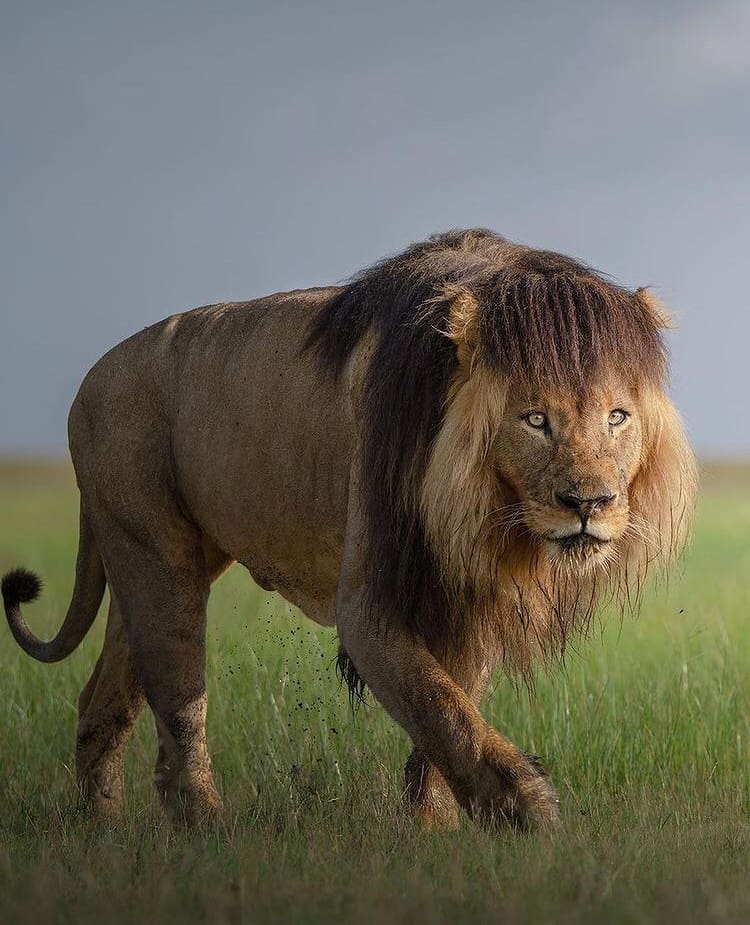
How big is the African lion?
Lions are large predators, powerfully built in order to be able to handle the toughest of situations. Males average at around 4ft. (1.2m) tall at the shoulder, while females tend to be slightly shorter. Both males and females possess thick bodies, with impeccably designed muscular system that allows them to be equal parts bulk, and sophisticated hunting machine.
A large male African lion can weigh up to 550lbs. (250kg), while females tend to average between 265 and 395 lbs. (120 to 180 kg).
African lion mane
Male lions boast an impressive head of hair called a mane. Contrary to what you might think its not a fashion statement, nor a way to differentiate between males and females. Its actually a defence mechanism.
The mane helps protect a male lion’s neck, throat, ears and skull dAfruring ferocious fights with other lions. The coarse hair provides a protective layer which lessens the effect of their rivals sharp teeth and powerful bite force. The same can be said for powerful paw swipes with razor sharp claws – a favoured weapon in a male lion’s arsenal!

The size and colour of a male lion’s mane varies according to genetics and the geographical area in which they live. Males with larger, darker manes are generally considered to be stronger and fitter and therefore less likely to be ‘messed with’.
Darker manes are also thought to be more attractive to lionesses who see it as a sign of strength and therefore a better chance at protection.
BEHAVIOUR
What do African lions eat?
Lions are carnivorous predators and their preferred prey items are large mammals like buffalo, zebra, wildebeest, antelope and at times even giraffe or hippo.
They are opportunistic hunters that will kill and eat almost anything, should the opportunity arise. African lions have been photographed eating baboons, tortoises and even porcupines.
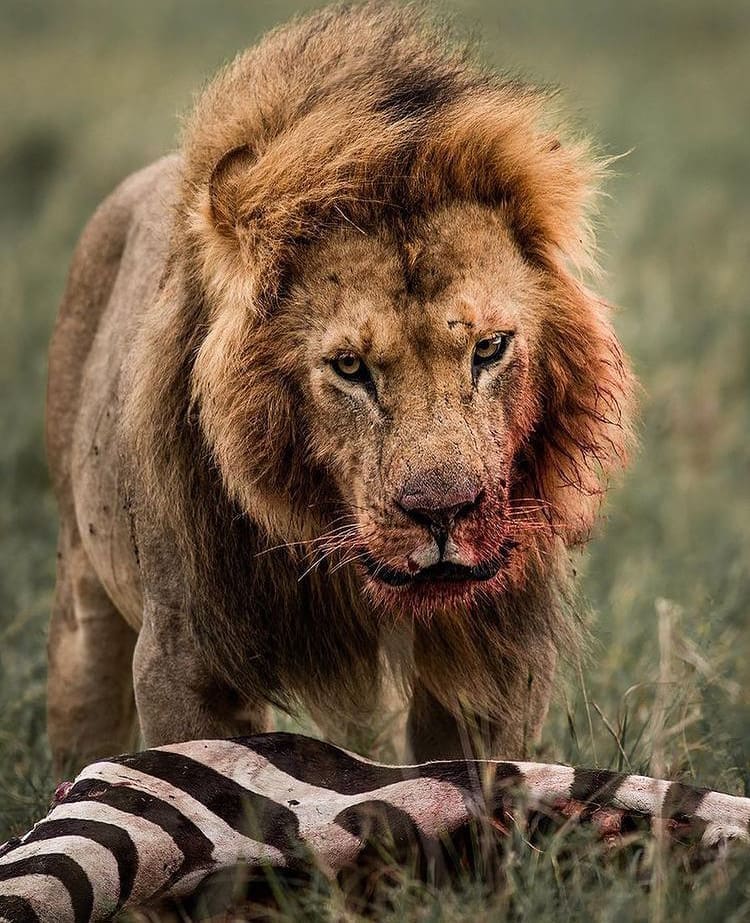
How do African lions hunt?
They work together using incredibly synchronised hunting tactics to stalk, chase and kill their prey, which is what allows them to go after such large prey items. The hunt usually starts with the element of surprise, but is brute force that usually gets them over the line.
A hunting pride at full force is arguably one of nature’s most powerful predatory forces, however the majority of lion hunts fail. It is thought that lion hunts are only successful 25% of the time.
They generally kill by asphyxiation, but have also been known to attack the genitals of their prey items to encourage blood loss. On very rare occasions lions have also been seen eating their prey alive.
With so many mouths to feed, even an 800kg buffalo only lasts 2-3 days before nothing but scraps are left over for scavengers to pick at.
African lion habits
Contrary to what most think, lions are incredibly lazy animals. They spend around 20 hours a day sleeping. Yes you read that right! All the action you saw on that Nat Geo doc happens for just a couple hours a day.

The warm day time hours are mainly spent lazing away in a shady spot under a tree. Lions are most active at dusk and dawn, and do the majority of their hunting during this time or overnight when its easier to catch their victims off guard.
They have an incredibly well-adapted eye sight which gives them an advantage over other mammals who are better suited for day time visual.
What is a lion pride?
African lions are one of the only social cat species, and live in family groups called prides.
A pride is usually led by a single male, or a coalition of brothers/cousins. A typical coalition will consist of 2 similar aged males, however certain parts of Africa have seen prides led by 5 or more males.
Pride females remain with the family for life and together share the responsibility for raising cubs. The number of females in a pride is usually relative to the number of males, and the average pride generally ranges between 5 and 20 individuals.
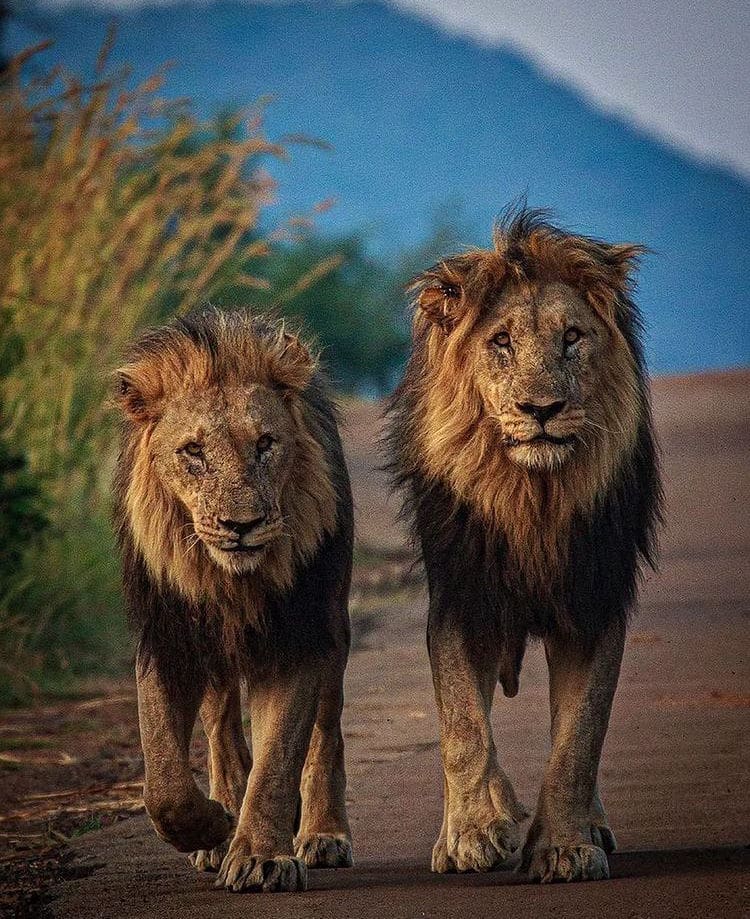 Male lions claim a large territory for themselves and their prides. They defend this with their lives and many ferocious battles have taken place in the African bush.
Male lions claim a large territory for themselves and their prides. They defend this with their lives and many ferocious battles have taken place in the African bush.
The size of a pride’s territory will be determined by the size of the pride and usually ranges between 8 and 150 square miles ( 20 – 400 sq km). Males will fight for territory in the richest hunting grounds, near the best water sources. To the victor go the spoils.
Pride males spend a large portion of their time patrolling their territory and warning off other lions with their intimidating roars. They also mark their territory by urinating on bushes, trees and grass, leaving a pungent odour behind.
Why do African lions roar?
Lions communicate through body language, growls, grunts and their roar. A lions roar is an extremely powerful sound that can be heard over 5 miles (8km) away. It is used in part as a sign of health and strength, and also as a territorial threat to other lions.

HABITAT AND RANGE
Where do lions live in Africa?
Lions prefer grassy savannahs and open woodland, and are seldom found in mountainous or overly forested areas. This is both because it is easier for them to move around in open spaces, and because these are the types of habitat that their ideal prey items live in.
They once roamed the entire African continent, and even parts of Europe and Asia. However today the wild population has been reduced to 8% of its range, and is only found in sub-Saharan Africa.
Conservation status
How Many Lions Are There in Africa?
With the continent being so vast, its hard to say exactly how many lions are in Africa. However estimates suggest the number to be around 23,000 individuals.
Are African Lions Endangered?
The population is currently considered as vulnerable in Africa and is listed as so on the IUCN red list. Conservation organisations state the wild population has declined more than 40% in the last 2 decades.
Threats to African lions
There are various threats to the lion population in Africa today. Habitat destruction and deforestation are at the forefront. As wild spaces diminish, lions are forced into smaller and smaller regions. This also leads to increased instances of human-wildlife conflict, as lions make their way onto private farms and towns in search for food.
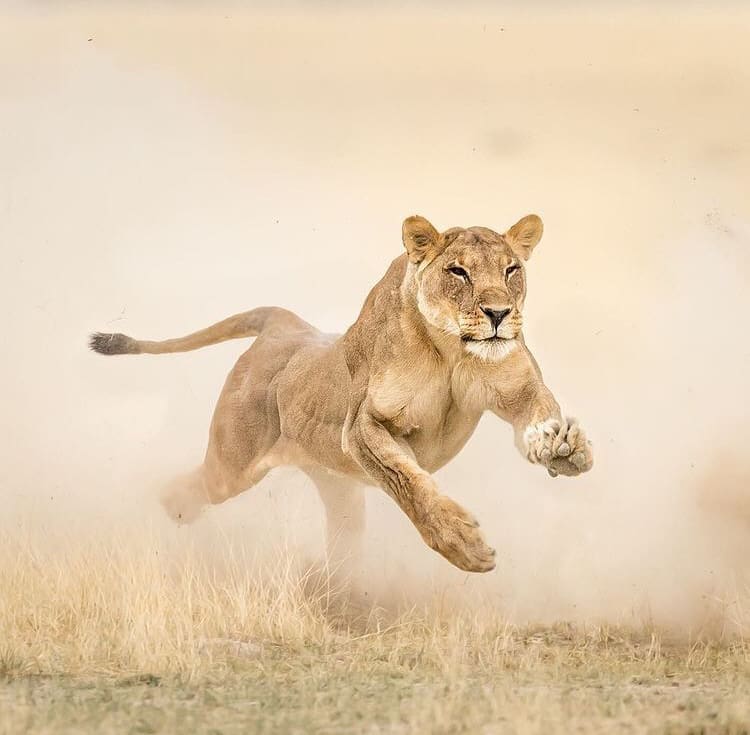
Safari
Where to see lions in Africa?
The best places to see lions while on safari in Africa are national parks in the southern and eastern parts of the continent. The big-name safari destinations are famous for a reason, and offer spectacular wildlife viewing, particularly when it comes to big cats. Most destinations offer guided safaris with experienced field guides, self-drive safari options or a combination of both.
Below are some of the best places to check out if you’re hoping to see African lions in the wild:
- Kruger National Park, South Africa
- Serengeti National Park, Tanzania
- Maasai Mara National Reserve, Kenya
- MalaMala Private Game Reserve, South Africa
- Okavango Delta, Botswana
- Kgalagadi Transfrontier Park, South Africa
Interesting FACTS about african lions
- White Lions – White lions are a genetic mutation of the common tawny lion. They are extremely rare and only naturally occur in the Timbavati region of Kruger National Park.
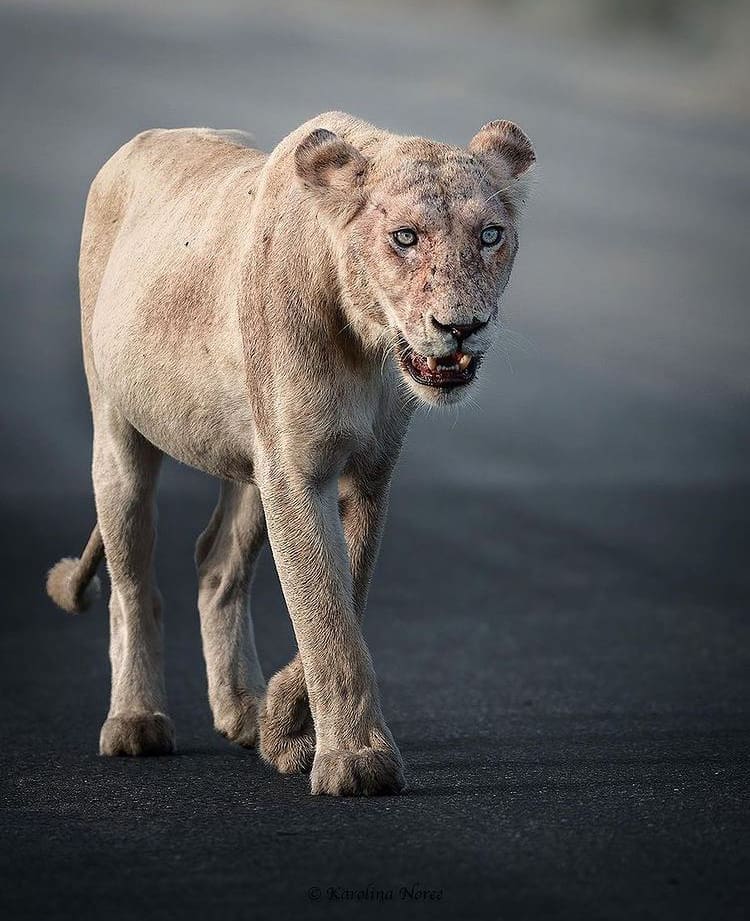
- Infanticide Male lions who have taken over a pride after winning a fight against another pride male, are known to regularly attack and kill their rival’s cubs. They do this to encourage the pride females back into eastrus in order to father cubs of their own.
- Biggest Lions in Africa – The lion population in Botswana are said to be the largest of the big cats on the continent. This is due to the abundance of buffalo, which they feed on almost exclusively. It is also thought the swampy environment has forced the lions to adapt by becoming more muscular, which allows them to run through the water with ease.
- Teeth – Lions have 30 teeth in total, and 3 different kinds – canines, incisors, and carnassials. The four canines are the largest teeth, growing up to 7cm in length, and are used for biting and tearing meat.
- Bite Force – Surprisingly African lions don’t have a very strong bite force. Studies suggest that a lion’s bite force is only around 650 PSI, which is not much more than the hardest-biting domestic dog.
- Human Attacks – one of the most commonly searched terms regarding these iconic big cats is ‘How many people are killed by lions every year?”. While the number might not be as high as you’d think, these apex predators are still responsible for killing aproximately 200 human deaths each year. For the most part lions are not a real threat to humans, except for rural communities living in close proximity to national parks and reserves.
- Cubs are born with spots – African lion cubs are born with spots, or rosettes, all over their body. These help them to camouflage in the long grass and gradually fade with age.
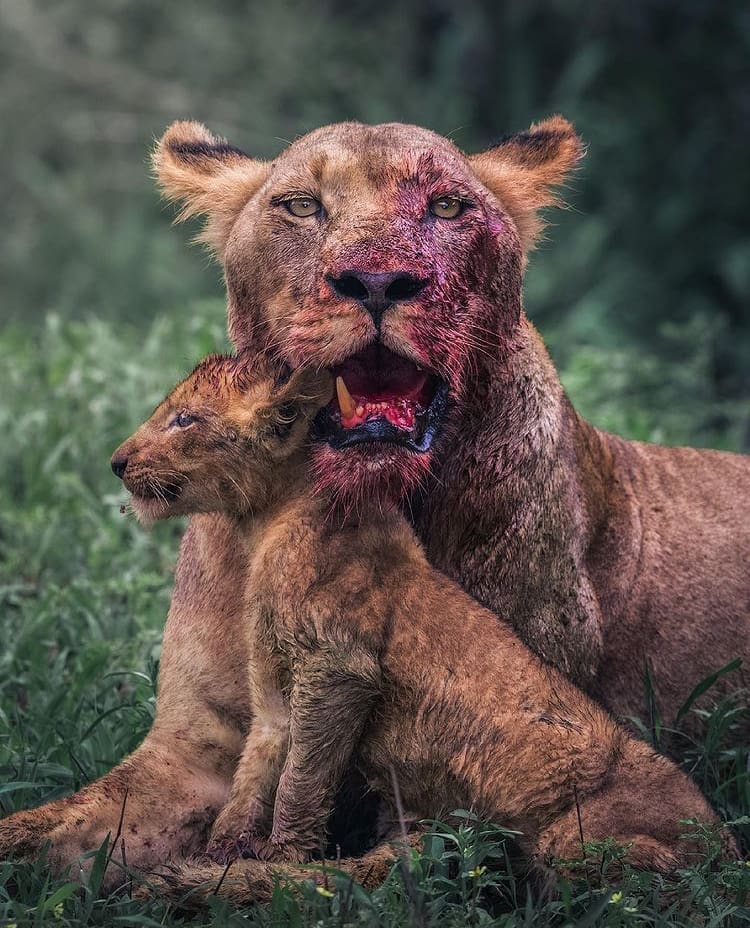
Myths about african lions
- Males don’t hunt – One of the most common myths about lions is that males don’t hunt at all, and contribute nothing towards feeding the pride. Males do in fact hunt along with the females, particularly when the target prey item is large. Nomad males are also forced to height alone to feed themselves, and sightings have occurred of a large male taking down a buffalo alone.
- Lions are active – Another myth spurred on by nature documentaries is that lions are active animals that are out hunting all day. Lions actually spend 80% of the day sleeping and lazing around.
- Lions hunt everyday – A pride of lions will stay with a large kill for 2-3 days, feeding on it intermittently until there is either nothing left or until the flesh becomes too rotten. Depending on the size of their last meal, and the size of the pride, lions will usually only hunt every 4-5 days.
